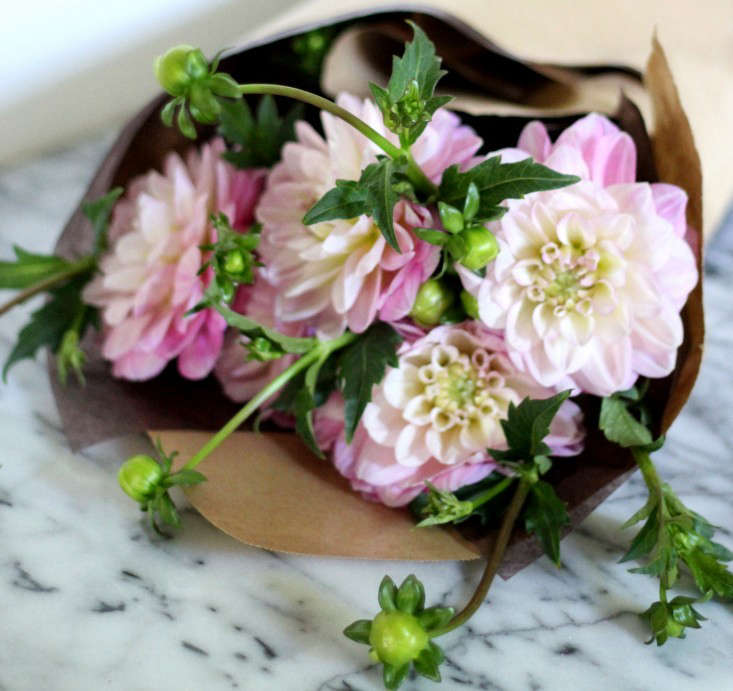Dahlia: “The Valley Girl”
The dahlia, discovered by early Spanish explorers in warm South American climes, actually means “valley flower” in Swedish as a result of a transcontinental mix-up. And yet, true to its name (and to San Francisco, where it’s the official flower), the dahlia lives up to the name of valley–and Valley girl. Valley girls, or should we say dahlias, refuse to live anywhere except regions that are free of frost.
Dahlias love to be pampered, and cold spells make them pout. They compete to wear the loudest clothes, in colors that range from spray-tan orange to bubble-gum pink. And they always travel in a pack. Dahlias prefer to be surrounded by their own kind, so they can gossip freely, away from large trees and shrubs that would lap up all their drinks.

The celeb du jour is the blue dahlia, but it avoids the cameras, leading to the consensus that this highly desirable hue of the flower does not actually exist. (Back in the 1800s, a horticultural society in Edinburgh offered an impressive cash prize to anyone who could find it.)


Cheat Sheet
- Dahlias don’t like competition; they prefer to be by themselves or in a vegetable garden away from large trees and shrubs.
- These showstoppers will hog all the attention; place them in the garden accordingly.
- Dahlias are your late-summer friends. Their vivid pink, red, orange, and yellow flowers can provide all the color a frazzled garden needs.

Keep It Alive
- Hardy in growing zones 8-10; elsewhere you need to dig up the tubers and store them for the winter in a dry, cool spot.
- The plants must be staked to remain upright.
- Dahlias in full bloom can be their own worst enemy. In heavy rains, the open blossoms fill with water like a dish; if too much water accumulates, the stalk will tip over. It’s your job to shake off the water (see: pampering).

Dahlias are instantly discernible in a crowd, even though they have different body types. Some of the flowers look like pom-poms stuck on top of slender stalks, some resemble big flat lollipops, and others stick out wispily in all directions like surfer hair. The one place where these different shapes find common ground? They all look suspiciously top-heavy.


.jpg)
Read More

N.B.: Want to inject some color into your late-summer garden?
- For inspiration, see It’s High Season in Grace Kennedy’s Garden.
- For tips on planting, care, and design, see our Garden Design 101: A Filed Guide
- Some of our colorful favorites include Nasturtiums 101, Cosmos 101, and Alyssum 101.
Finally, get more ideas on how to successfully plant, grow, and care for dahlia with our Dahlia: A Field Guide.
Interested in other bulbs and tubers for your garden or indoor space? Get more ideas on how to plant, grow, and care for various bulbs and tubers with our Bulbs & Tubers: A Field Guide.









Have a Question or Comment About This Post?
Join the conversation